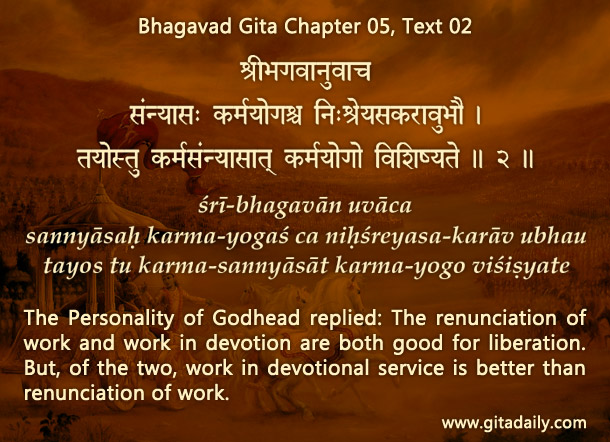Some people argue, “The world is a place of entanglement that needs to be renounced to attain liberation.” Others argue, “Our duties in this world are ordained by God – by doing these duties responsibly, we can please him.”
Both sides can quote scripture to bolster their point of view. Indeed, the Bhagavad-gita (05.02) commends both such paths as conducive to transcendence. While the Gita recommends the path of engagement, it refers to the path of renunciation respectfully, deeming its proponents wise (18.03: manishinah)
Such opposing arguments about engagement and renunciation are not counters, but are counterbalances. A counter-argument aims to refute the original argument. A counter-balancing argument, on the other hand, aims to restore balance by presenting the other side of the story.
Counter-balancing presentations can be seen in the paths stressed in the Bhagavad-gita and Srimad-Bhagavatam respectively. The Gita is primarily world-affirming, whereas the Bhagavatam is largely world-renouncing. This difference demonstrates how in different contexts the same spiritual principles can have differing, even opposing, applications.
When Arjuna desires to renounce the world, the Gita urges him to act in the world with a devotional mood. In his circumstance, with he being the foremost warrior on the side of virtue, he can best contribute by fighting to establish the rule of dharma in the world.
On the other hand, when Parikshit is cursed to die in seven days, the circumstances are far different. With Kali-yuga imminent, the king who has lifelong held that age’s influence back externally can now best serve the world in another way. He can demonstrate for all people the best process of holding Kali’s influence back internally: by absorbing oneself in hearing Krishna’s glories.
By thus seeing varying scriptural stresses as counterbalances, not counters, we can detect the underlying consistent purpose that harmonizes apparently contradictory scriptural injunctions.
To know more about this verse, please click on the image
Explanation of article:
Podcast:


Leave A Comment